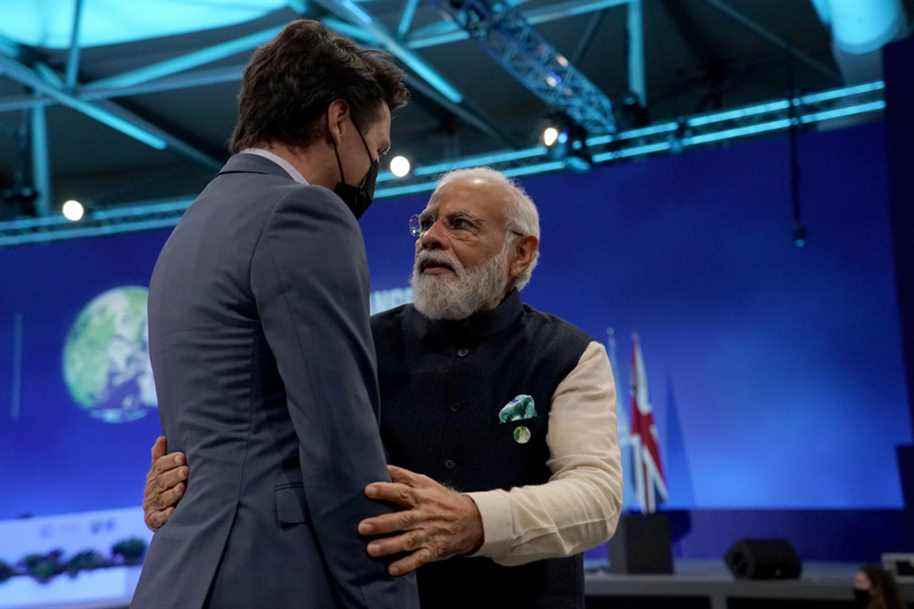(Ottawa) Canada and India quietly set the stage to relaunch official free trade talks as the Trudeau government seeks economic partners other than China over the dispute over the case involving Meng Wanzhou and the two Michael.
Trade negotiators from the two countries have held four “consultative meetings” in the past year via video, and in the most recent, in October, the two sides exchanged preliminary proposals, said Anshuman Gaur, the senior official. Deputy Commissioner of India to Canada.
“They talked about the approaches and the way forward,” he said in an interview over the past few days.
The renewed commitment is the result of India’s dynamic new trade policy, dubbed the ‘early harvest’, which has seen the country attempt to move gradually towards large-scale free trade agreements with Britain, the European Union, Australia, the United Arab Emirates and now Canada.
It also comes as the federal government comes out of its three-year diplomatic freeze with China following the return of Michael Spavor and Michael Kovrig to Canada. They have spent more than 1,000 days in Chinese prisons in what is widely seen as retaliation for the RCMP’s arrest of Meng Wanzhou, a Huawei executive, following a US extradition request in 2018.
Canada is seeking to reduce its economic dependence on China and to diversify into new Asian markets. It recently launched formal trade negotiations with the Association of Southeast Asian Nations – known as ASEAN – a 10-country bloc that includes the Philippines, Indonesia and Thailand.
The Liberal government’s November 23 Speech from the Throne recognized this priority, stating: “A changing world demands an adaptation and expansion of diplomatic engagement. Canada will continue to work with key allies and partners, while making deliberate efforts to deepen partnerships in the Indo-Pacific and across the Arctic. ”
International Trade Minister Mary Ng discussed the possible deal with her Indian counterpart, Piyush Goyal, last summer in Rome at a G20 meeting.

PHOTO PATRICK DOYLE, THE CANADIAN PRESS
International Trade Minister Mary Ng
India and Canada, absolutely, I think they have opportunities to deepen our trade and exchange relationship.
Mary Ng, Minister of International Trade
Canada began trade negotiations with India over a decade ago under the Conservative government of Stephen Harper. The process was put on hold again in 2018, as Canada was in the midst of its intense renegotiation of the North American Free Trade Agreement with the United States and Mexico at the initiative of the former U.S. president. Donald Trump.
Prime Minister Justin Trudeau paid a controversial visit to India in February 2018, where he and his family came under heavy criticism in their country for dressing in traditional Indian clothing.
Mr. Gaur dismisses any suggestion that Mr. Trudeau has offended his country, saying he understands Canada’s need to focus on the United States and Mexico.
None of this, he said, diminishes India’s interest in doing business with Canada with the goal of increasing the $ 12.8 billion in annual trade between the two countries.
This has made Canada one of the priority countries for India’s “early harvest” trade strategy, which is a real stepping stone to accelerate progress towards broader free trade agreements. This is about continuing partial progress in reducing tariffs on certain goods and services while leaving more difficult issues unresolved for subsequent more comprehensive free trade agreements.
“We are trying to formalize an agreement on the areas where the differences are the least important and we continue to discuss some of the areas where there are the most differences,” Gaur said.
India’s pursuit of trade deals comes as many countries, including Canada, reconsider their stance on China amid growing human rights concerns.
